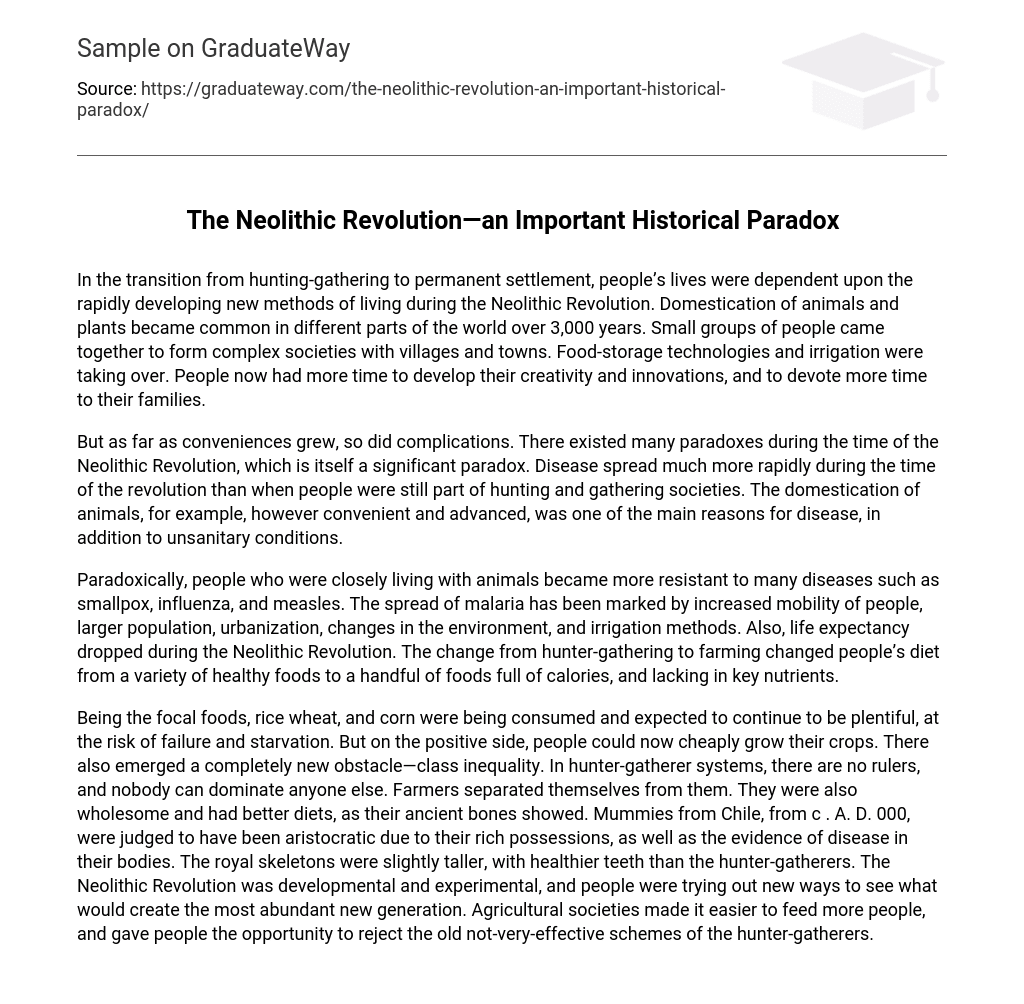In the transition from hunting-gathering to permanent settlement, people’s lives were dependent upon the rapidly developing new methods of living during the Neolithic Revolution. Domestication of animals and plants became common in different parts of the world over 3,000 years. Small groups of people came together to form complex societies with villages and towns. Food-storage technologies and irrigation were taking over. People now had more time to develop their creativity and innovations, and to devote more time to their families.
But as far as conveniences grew, so did complications. There existed many paradoxes during the time of the Neolithic Revolution, which is itself a significant paradox. Disease spread much more rapidly during the time of the revolution than when people were still part of hunting and gathering societies. The domestication of animals, for example, however convenient and advanced, was one of the main reasons for disease, in addition to unsanitary conditions.
Paradoxically, people who were closely living with animals became more resistant to many diseases such as smallpox, influenza, and measles. The spread of malaria has been marked by increased mobility of people, larger population, urbanization, changes in the environment, and irrigation methods. Also, life expectancy dropped during the Neolithic Revolution. The change from hunter-gathering to farming changed people’s diet from a variety of healthy foods to a handful of foods full of calories, and lacking in key nutrients.
Being the focal foods, rice wheat, and corn were being consumed and expected to continue to be plentiful, at the risk of failure and starvation. But on the positive side, people could now cheaply grow their crops. There also emerged a completely new obstacle—class inequality. In hunter-gatherer systems, there are no rulers, and nobody can dominate anyone else. Farmers separated themselves from them. They were also wholesome and had better diets, as their ancient bones showed. Mummies from Chile, from c . A. D. 000, were judged to have been aristocratic due to their rich possessions, as well as the evidence of disease in their bodies. The royal skeletons were slightly taller, with healthier teeth than the hunter-gatherers. The Neolithic Revolution was developmental and experimental, and people were trying out new ways to see what would create the most abundant new generation. Agricultural societies made it easier to feed more people, and gave people the opportunity to reject the old not-very-effective schemes of the hunter-gatherers.





